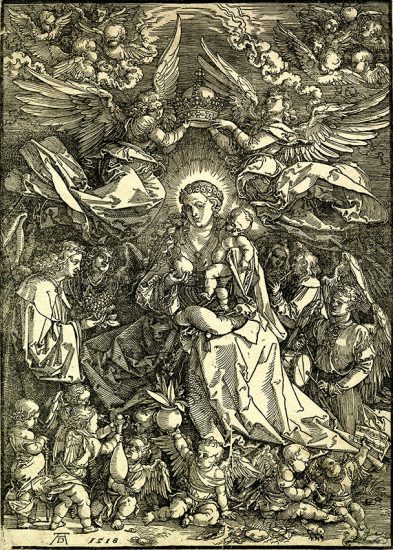Fine art of queens, kings, and royal families.
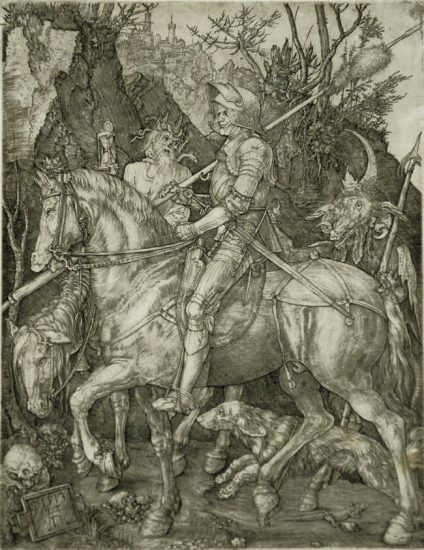

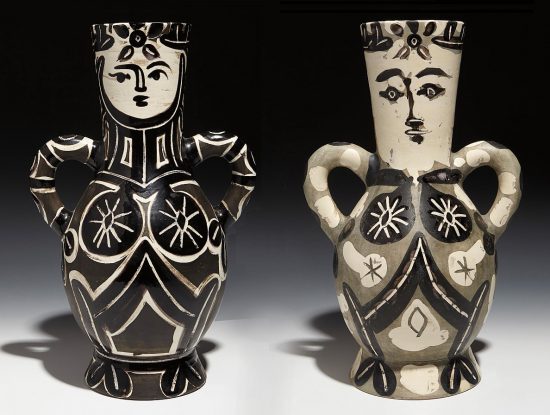





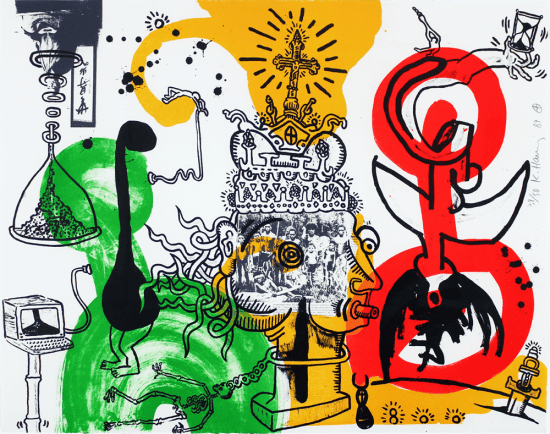


Undisputed master of the woodcut, Albrecht Dürer is one of the most celebrated Northern Renaissance painters and printmakers. Dürer's etchings, engravings, and woodcut prints, such as The Apocalypse and Knight, Death and the Devil, also contain exquisite detail and elaborate imagery drawing on religious and philosophical ideas.
Genres: Old Masters Religious Portraiture
Sell Albrecht Dürer artwork with us. We will research its value and popularity for you.
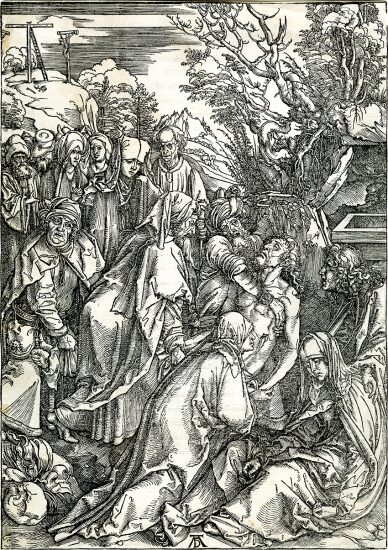
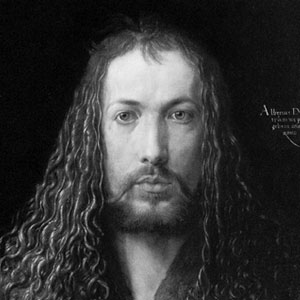
German painter, engraver, Albrecht Dürer was the designer of woodcuts and major art theorist. Dürer was born in Nuremberg and trained first under his father, a goldsmith. He was apprenticed (1486-90) to M. Wolgemut, in whose workshop he became familiar with the best work of contemporary German artists and with the recent technical advances in engraving and drawing for woodcuts. He was in Nuremberg for his marriage in 1496, but left in the autumn of that year for Italy. On this visit and during the longer stay of 1505-7, he made a profound study of Italian painting at the very moment when it was being changed by the revolutionary ideas of Leonardo da Vinci and others. He also studied the whole intellectual background of the Italian Renaissance, the writings of the humanists and, in particular, Mantegna’s attempts to recreate in engravings and paintings the classical canon of art. Dürer made his own personal synthesis of the arts of the north and south, a synthesis which was to have immense importance to European art. His success and reputation increased rapidly. Until 1499 he was engaged chiefly on engravings and designs for his books of woodcuts. He was encouraged by an enthusiastic patron, the Elector of Saxony, and he became the friend of many of the chief figures of the Reformation. Though he never broke with Catholicism, Dürer was deeply involved in the religious controversy until his death. In 1512 he was made court painter to the Emperor Maximilian. In his last years he planned and partly composed a thesis on the theoretical basis of the arts.
The Thames and Hudson Dictionary of Art and Artists. Typical of Dürer's Passion woodcuts, the print is a window onto an event rather than a balanced and complete composition. Despite the architecture, the palm tree defines the sub-tropical location of the scene.
Dürer began the Large Passion c, 1496-97; Strauss thinks it quite possible that The Flagellation (Bartsch 8, Strauss 37),was the first print in the series. Over the next few years, Dürer added six additional woodcuts, and the seven were sold as single sheets. Dürer returned to the series c. 1510, adding 4 more woodcuts, and published the series with a frontispiece and a Latin text by Benedictus Chelidonius printed on the verso of the prints. Other works in the series include The Agony in the Garden (c. 1496-97, though possibly 1498: B. 6, S. 38), The Deposition of Christ (c. 1496-97: B. 12, S. 39), Ecce Homo (1498: B. 9, S. 58); The Bearing of the Cross (c. 1498-99: B. 10, S. 59), The Lamentation (c. 1498-99: B. 13, S. 60), The Crucifixion (c. 1498: B. 11, S. 61), The Last Supper (dated 1510: B. 5, S. 148); The Betrayal of Christ (dated 1510: B. 7, S. 149), The Harrowing of Hell (dated 1510: B. 14, S. 150), The Resurrection (dated 1510: B. 15, S. 151), Christ as the Man of Sorrows Mocked by a Soldier (c. 1511: B. 4, S. 157). Although The Trinity (dated 1511: B. 122, S. 164) was not bound up with the other sheets of the Large Passion, in size, in style, and in subject matter, it is one with the late sheets of the series. Dürer interrupted his work on the Large Passion to work on his other great series, The Apocaplyse (c. 1498, republished with new works 1511) the Life of the Virgin (c. 1501-2, completed and published 1511), the Small Woodcut Passion (c. 1508-1510, published 1511), and the Engraved Passion (c. 1506-1510). The inventiveness shown in these related series can be quickly seen by comparing them: Dürer was rarely content to simply repeat an approach that he had already tried.
Walter L. Strauss in his catalogue raisonne, Albrecht Dürer Woodcuts and Woodblocks (Abaris Books, 1980), provides a summary of comments upon each individual work. Strauss’s Commentary volume in the Illustrated Bartsch series updates his commentary here. As always, Panofsky’s Life and Art of Albrecht Dürer (Princeton University Press, 1945, revised editions culminating in the 1971 edition) is crucial for an understanding of the work of this great artist and printmaker.
According to Walter Strauss (Albrecht Dürer Woodcuts and Wood Blocks [NY: Abaris Books, 1980], p. 342 and after), Dürer began the Small Woodcut Passion sometime in 1508 or 1509, completed it in 1510, and published it in 1511 with Latin verses by Benedictus Chelidonius facing each plate. There are thirty-seven woodcuts in the series, beginning The Fall of Man and concluding with The Last Judgment. While only a few of the plates are dated, those that are suggest that Dürer originally began with Christ’s Entry into Jerusalem on Palm Sunday and concluded with The Last Judgment. As he was completing the series c. 1510, however, he added The Fall of Man, The Expulsion from Eden (dated 1510), The Annunciation, The Nativity, and Saints Peter, Paul, and Veronica holding the Suderium (dated 1510). These additions change the focus from a history of The Passion to a history of mankind with Adam and Eve as the source of man’s woes and Jesus as man’s salvation. Of all of Dürer's great works in series, the Small Woodcut Passion is by far the largest. It was also one of his most popular: it was reprinted several times up to an Italian edition of 1612. Although there exist later impressions printed from Dürer's original blocks, they are gray and blotchy and do not print well. In addition to the prints made from Dürer's woodblocks and the copies by Marantonio Raimondi (engravings published in Venice in the early 16th century), Virgil Solis (published in Nurenberg in the late 16th century with Solis’ monogram VS, and a set of very deceptive copies by Mommard published a bit later, there exists as well a set made in the 19th century from metal plates made from plaster casts of thierty-five of Dürer's original woodblocks after they were given to the British Museum in 1839. In 1844 Henry Cole of the South Kensington Museum (now the Victoria and Albert Museum) published his collection of the the Dürer Small Passion woodcuts and described the process by which they were made:
The present work, with the exception of two subjects, is taken from the original engravings, prints drawn by Albrecht Dürer himself on the wood, and engraved under his own superintendence.
“The present work, with the exception of two subjects, is taken from the original engravings, prints drawn by Albrecht Dürer himself on the wood, and engraved under his own superintendence. [The consensus is that Dürer cut the blocks himself for his early works including The Ship of Fools until he could train professional woodcutters to reach the level he had achieved, worlds beyond anything anyone had done up to that time in terms of subtlety, fineness of line, density, etc.] . . . [T]he present, it is believed makes the fourth edition of the genuine blocks. I say genuine blocks, for so great was the popularity and estimation of the work, that there has been more than one obvious imitation of them, besides several avowed copies constantly circulating throughout Europe. The Small Passion is stated by all writers on the subject . . . to have originally consisted of thirty-seven subjects. . . . [He then distinguishes two lifetime editions of the complete work, as opposed to individual printings of individual works that Dürer sold or gave away when he traveled]. The third edition of the genuine woodcuts was published at Venice, in 1612, by a Librarian who, according to Heinecke, purchased them in the Netherlands. . . . The engravings republished in the present volumes are from the same blocks. Thirty-five of the thirty-seven of them have found a secure resting place in the British Museum. They were purchased in 1839 by Mr. Josi, the present keeper of the prints, from the Rev. P. E. Boissier, whose father bought them many years ago in Italy. . . . The four impressions of these blocks which were printed by Mr. Otley in his History of Engraving, (p. 730) show the extent of the damage which the blocks have suffered. But in the present edition of them, the defects have been remedied by using stereotype casts of the blocks, which have been taken by a special permission of the trustees of the British Museum [that would never have happened in this century!]. New border lines have been added, the worm-holes stopped, and those parts skillfully recut by Mr. Thurston Thompson, who has also re-engraved with full feeling, the subjects of the Sitting Christ and of Jesus Parting from his Mother. The process of stereotyping has had the good effect of restoring almost the original sharpness and crispness of the lines, and of rendering the present impressions nearer the state of the earliest impressions than they would have been had they been taken from the blocks themselves. This statement may seem paradoxical, but it will be seen that it has a reasonable explanation. In order to take a metal cast of a woodcut, a cast is first taken in moist plaster of Paris. This is thoroughly dried by baking, which causes it to shrink throughout, sometimes as much as the eighth of an inch in a cast of six inches in length. The result of this slight shrinkage has been to reduce these thickened lines nearly to their original fineness, and several of the present impressions are so crisp and clear that they will not suffer by comparison with choice early impressions.”
DÜRER PAINTINGS
Towards the end of his apprenticeship with Wolgemut, Dürer produced his first dated painting featuring his father Albrecht Dürer the Elder in 1490. The portrait was part of a pair of panels intended either as pendants or as diptych wings. Dürer later traveled to Italy during the Renaissance, a remarkable era of creativity and invention. His stay in Italy was incredibly important for him, exposing him to the works of Andrea Mantegna, Antonio Pollaiuolo and Lorenzo di Credi. These painters were best known for their experimentation with perspective and the theory of human proportions, two innovations Dürer took great interest in. When he returned to Nuremberg that year, he began a successful career as a painter, receiving commissions from Frederick the Wise, Elector of Saxony. One of his best known paintings is Adam and Eve, 1504 which depicted the first full-scale nude subjects in German painting. His paintings are rare in the art market given Dürer’s predominant occupation as a printmaker.
DÜRER ENGRAVINGS
Albrecht Dürer’s earliest prints were influenced by German printmakers such as Martin Schongauer. Engravings became his preferred technique for his later body of work. To create his engravings, Dürer first engraved the image onto a copper plate with a cutter. Afterwards, the engraved plate was inked and wiped, depositing the dark ink into the grooves. This technique would have been familiar to Dürer who worked as a goldsmith in his father’s workshop. Dürer’s earliest signed print was the engraving Holy Family with Dragonfly, c. 1494. His greatest achievements in printmaking include three engravings completed between 1513 and 1514: Knight, Death and the Devil, St. Jerome in his Study, and Melencolia I. These engravings are some of his most famous masterpieces in the medium. Dürer’s prints continue to command high prices in the art market. In 2013, Christie’s hosted an auction dedicated to Dürer prints. The auction earned $6 million in sales from its 62 lots.
DÜRER WOODCUTS
It was during his apprenticeship that Dürer studied the technique of woodcuts. Wolgemut was an excellent teacher whose woodcuts were some of the best in Europe at the time. In creating the woodcuts, Dürer typically provided sketches of the design in mind and relied on artisans to cut the sketches into the wood. In 1496, he began creating 12 woodcuts which depicted the death of Christ. This series, titled Large Passion , took 15 years to complete.
However, one of his greatest achievements in the woodcut medium was the The Apocalypse, a set of 15 woodcuts narrating the revelations of St. John.
This set was completed in 1497-98.
We offer a selection if impressions ranging from Dürer's first edition lifetime proofs to later editions and include some of the 1844 impressions as well.
Select bibliography: Walter L. Strauss in his catalogue raisonne, Albrecht Dürer Woodcuts and Woodblocks (Abaris Books, 1980), provides a summary of comments upon each individaul work. Strauss’ Commentary volume in the Illustrated Bartsch series updates his earlier commentary. As always, Panofsky’s Life and Art of Albrecht Dürer (Princeton University Press, 1945, revised editions culminating in the 1971 edition) are crucial for an understanding of the work of this great artist and printmaker.
Browse Albrecht Dürer Catalogue Raisonnés Online.
En español: Albrecht Dürer.
